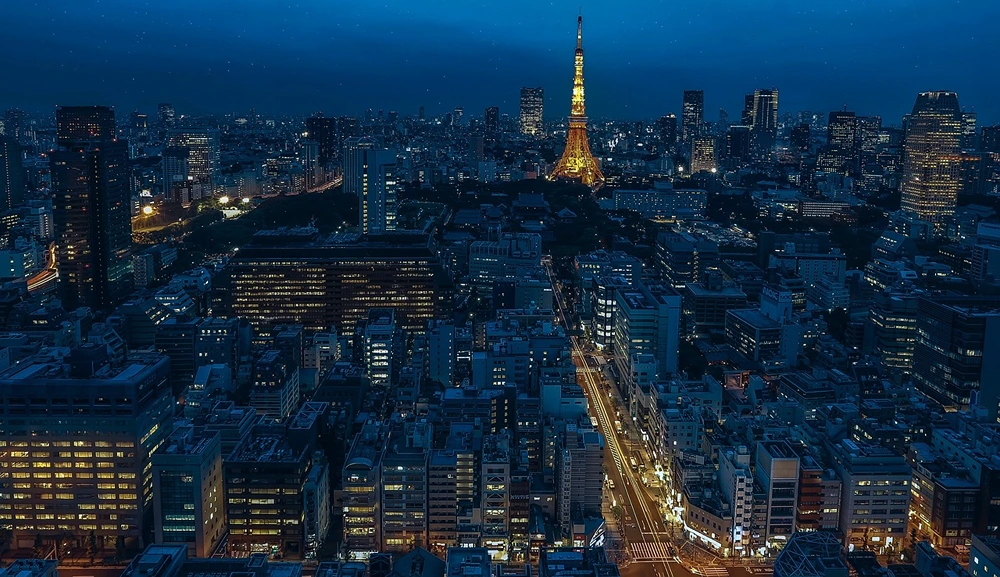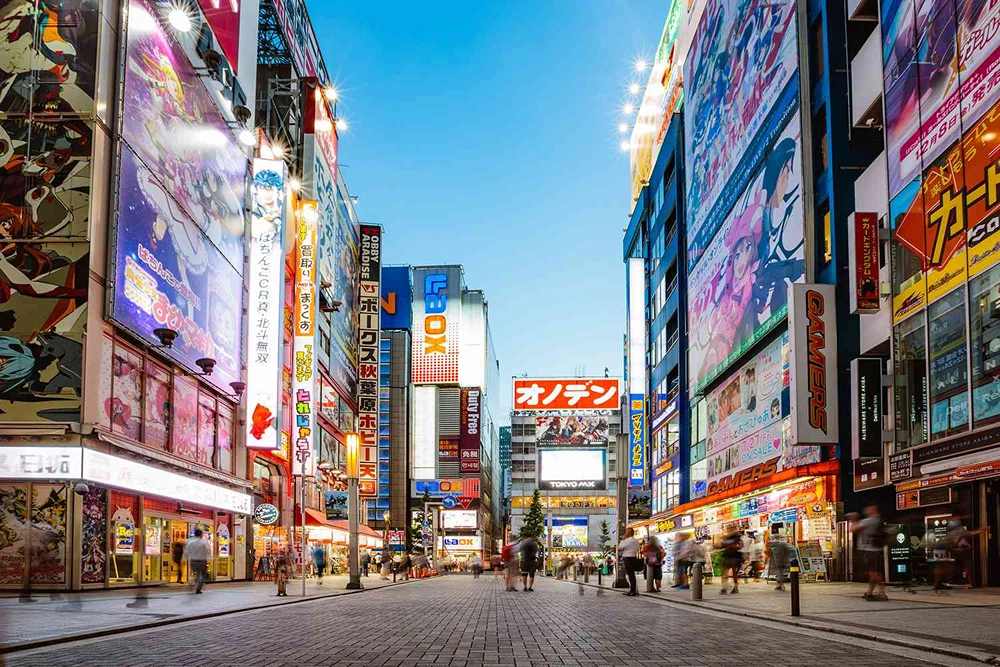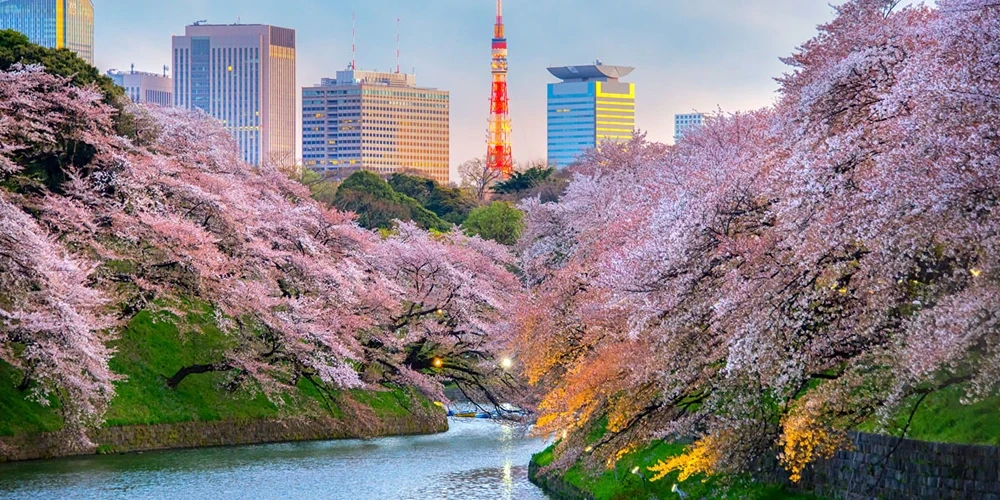Travel Resources
- Tokyo Metro Pass: For extensive travel within Tokyo, a metro pass can offer significant savings. The Tokyo Metro offers 24, 48, and 72-hour passes for unlimited rides.
- IC Card: Get a prepaid IC card (like Pasmo or Suica) for convenient use on public transportation and in many stores.
- Pocket Wi-Fi or SIM Card: Stay connected with a portable Wi-Fi device or a Japanese SIM card. This is crucial for navigation and translation apps in Tokyo’s complex urban landscape.
- Tokyo Free Wi-Fi: The city offers free Wi-Fi in many public areas. Look for the “Tokyo Free Wi-Fi” signs.
- Tokyo Official Travel App: This free app provides travel information, free Wi-Fi spots, and emergency information specific to Tokyo.

Some History First
Tokyo’s history is a fascinating journey from a small fishing village to a global metropolis:
- Edo Period (1603-1868): The city, then known as Edo, became the seat of the Tokugawa shogunate. This period saw significant urban development and population growth.
- Meiji Restoration (1868): Edo was renamed Tokyo (“Eastern Capital”) and became the official capital of Japan.
- Great Kanto Earthquake (1923): A devastating earthquake led to widespread rebuilding and modernization.
- Post-World War II: Tokyo experienced rapid economic growth, becoming a global financial and cultural center.
Key historical sites to visit include:
- The Imperial Palace, residence of Japan’s Imperial Family
- Sensō-ji, Tokyo’s oldest temple
- Edo-Tokyo Museum, for a comprehensive look at the city’s history
Tokyo Today
Modern Tokyo is a city of contrasts, where the ultra-modern coexists with the traditional:
- Technology Hub: Tokyo is at the forefront of technological innovation, particularly in robotics, electronics, and automotive industries. Visit Akihabara, the “Electric Town,” to experience the latest tech trends.
- Fashion and Pop Culture: Tokyo is a trendsetter in fashion and pop culture. Areas like Harajuku and Shibuya showcase unique fashion trends and subcultures.
- Business Center: As a global financial hub, Tokyo’s business district of Marunouchi showcases impressive skyscrapers and corporate headquarters.
- Green Spaces: Despite its urban density, Tokyo boasts beautiful parks and gardens, such as Ueno Park and the Shinjuku Gyoen National Garden.
Is Tokyo Safe?
Tokyo is consistently ranked as one of the safest large cities in the world. Crime rates are exceptionally low, and it’s common to see people using their smartphones on public transportation or leaving their belongings briefly unattended in cafes.
However, travelers should still exercise common-sense precautions:
- Be aware of your surroundings, especially in crowded areas like Shibuya Crossing.
- Keep an eye on your belongings in busy tourist spots and on public transportation.
- Follow local customs and etiquette to avoid unintentionally offending locals.
Natural disasters, particularly earthquakes, can occur. Familiarize yourself with basic earthquake safety procedures and know the location of your nearest evacuation area.
Where is Tokyo?
Tokyo is located on the eastern coast of Honshu, Japan’s largest island. It sits at the head of Tokyo Bay, about 90 kilometers east of Mount Fuji. The city is divided into 23 special wards, each functioning as an individual city, as well as multiple cities, towns, and villages in the western part of the prefecture.
Key areas in Tokyo include:
- Shinjuku: Major commercial and administrative center
- Shibuya: Fashion and entertainment hub
- Asakusa: Traditional district with historic temples
- Ginza: Upscale shopping area
- Akihabara: Center for electronics and otaku culture
Latest Articles
From The Area
Nothing found.
What is the Best Time to Visit Tokyo?
The best time to visit Tokyo depends on your preferences:
- Spring (March to May): The most popular time to visit, famous for cherry blossom season. Peak bloom typically occurs in late March to early April. Temperatures are mild and comfortable.
- Summer (June to August): Hot and humid, with temperatures often exceeding 30°C (86°F). This is the season for impressive festivals like the Sumida River Fireworks Festival.
- Autumn (September to November): Another beautiful season with comfortable temperatures and stunning fall foliage, especially in parks like Rikugien and Shinjuku Gyoen.
- Winter (December to February): Cold but rarely snowy in Tokyo. This is a great time to enjoy winter illuminations, New Year celebrations, and fewer crowds at popular attractions.
How to Get to Tokyo & Around
- Trains and Subways:
- The extensive network of JR trains and Tokyo Metro/Toei subway lines cover most of the city.
- The Yamanote Line is a circular JR line that connects many of Tokyo’s major districts.
- Buses:
- Useful for reaching areas not served by trains.
- Can be more challenging for non-Japanese speakers.
- Taxis:
- Readily available but can be expensive.
- Useful for late-night travel when trains have stopped.
- Walking and Cycling:
- Many neighborhoods are best explored on foot.
- Bike-sharing services are available in some areas.
- IC Cards:
- Prepaid cards like Pasmo or Suica can be used across different transportation systems and even in some stores.
Things to Do in Tokyo
Tokyo offers a wealth of experiences for every type of traveler:
- Cultural Experiences:
- Visit ancient temples and shrines: Explore Senso-ji Temple in Asakusa or Meiji Shrine in Shibuya.
- Watch a sumo wrestling match at Ryogoku Kokugikan.
- Participate in a traditional tea ceremony.
- Experience a kabuki performance at Kabukiza Theater.
- Modern Tokyo:
- Cross the famous Shibuya Scramble Crossing.
- Visit the observation decks of Tokyo Skytree or Tokyo Tower for panoramic city views.
- Explore the pop culture haven of Akihabara.
- Experience the unique world of Japanese arcade games and purikura photo booths.
- Nature and Parks:
- Enjoy cherry blossoms or autumn foliage in Ueno Park.
- Visit the tranquil Shinjuku Gyoen National Garden.
- Take a boat ride in Inokashira Park.
- Food Experiences:
- Visit Tsukiji Outer Market for fresh seafood and sushi.
- Try conveyor-belt sushi (kaitenzushi) in Ginza.
- Experience the bustling atmosphere of an izakaya (Japanese pub).
- Take a cooking class to learn how to make sushi or ramen.
- Shopping:
- Explore the high-end boutiques of Ginza.
- Shop for electronics in Akihabara.
- Find unique fashion in Harajuku and Shibuya.
- Visit Nakamise Shopping Street in Asakusa for traditional souvenirs.
- Day Trips:
- Take a day trip to Kamakura to see the Great Buddha.
- Visit the hot springs resort town of Hakone for views of Mount Fuji.
- Explore the historic town of Nikko and its elaborate shrines.
Where To Stay In Tokyo
Tokyo offers a wide range of accommodation options to suit all budgets and preferences:
- Shinjuku:
- Central location with excellent transportation links.
- Mix of high-end hotels and budget-friendly options.
- Great for nightlife and shopping.
- Shibuya:
- Trendy area popular with young travelers.
- Close to fashion boutiques and nightlife.
- Asakusa:
- Traditional area with a more relaxed atmosphere.
- Good for budget travelers and those interested in historical sites.
- Ginza:
- Upscale area with luxury hotels.
- Ideal for high-end shopping and fine dining.
- Tokyo Station/Marunouchi:
- Convenient for business travelers and those planning day trips.
- Mix of luxury hotels and mid-range options.
- Unique Accommodations:
- Capsule hotels for a uniquely Japanese experience.
- Ryokan (traditional Japanese inns) for a taste of old Japan.
- Love hotels in areas like Shibuya can offer quirky, themed rooms.
Remember to book accommodations well in advance, especially during peak tourist seasons.

What To Eat In Tokyo
Tokyo is a food lover’s paradise, offering everything from Michelin-starred restaurants to delicious street food:
- Sushi and Sashimi:
- Try world-class sushi at Tsukiji Outer Market or high-end sushi restaurants in Ginza.
- Conveyor belt sushi restaurants offer a fun and budget-friendly experience.
- Ramen:
- Each district has its famous ramen shops. Try different regional styles.
- Visit ramen streets like Tokyo Ramen Street in Tokyo Station.
- Tempura:
- Enjoy lightly battered and deep-fried seafood or vegetables.
- Try tempura at specialized tempura restaurants or as part of a set meal.
- Wagyu Beef:
- Experience high-grade Japanese beef at teppanyaki restaurants.
- Monjayaki and Okonomiyaki:
- Try these savory pancakes in the Tsukishima area.
- Street Food:
- Sample takoyaki (octopus balls), yakitori (grilled chicken skewers), and taiyaki (fish-shaped pastry with sweet fillings).
- Department Store Food Halls:
- Visit depachika (department store basement food halls) for an array of gourmet foods and bento boxes.
- Themed Cafes:
- Experience uniquely Tokyo dining at animal cafes, maid cafes, or character-themed cafes.
- Izakaya:
- Japanese pubs offering a variety of small dishes, perfect for trying multiple foods.
- Kaiseki:
- For a high-end dining experience, try a multi-course kaiseki meal.
Dining etiquette tips:
- It’s polite to say “itadakimasu” before eating and “gochisousama deshita” after finishing.
- Slurping noodles is common and considered polite.
- Tipping is not customary in Tokyo.
Entry & Exit Requirements
Visa requirements for entering Tokyo (Japan) vary depending on your nationality and the purpose and length of your stay:
- Many countries have visa exemption arrangements with Japan for short-term stays (usually 90 days or less for tourism, business, or visiting friends/relatives).
- Check the Ministry of Foreign Affairs of Japan website for the most up-to-date information on visa requirements for your country.
What To Pack For Your Trip
What you pack will depend on the season and your planned activities, but here are some essentials for Tokyo:
- Comfortable walking shoes: Tokyo is a city best explored on foot and by public transit.
- Appropriate clothing for the season:
- Summer: Light, breathable clothing and sun protection.
- Winter: Warm layers, as it can get quite cold.
- Travel adapter: Japan uses Type A and B sockets (100 V, 50/60 Hz).
- Portable Wi-Fi device or SIM card for internet access.
- Cash: While credit cards are increasingly accepted, many small shops and restaurants in Tokyo are still cash-only.
- Pashmina or light jacket: For visiting temples or restaurants where air conditioning might be strong.
- Small towel: Many public restrooms don’t have hand dryers or paper towels.
- Comfortable socks: You’ll need to remove your shoes when entering many buildings.
- Translation app or pocket dictionary: While English signage is common, it can be helpful to have translation tools.
- Pocket tissues: Not all public restrooms provide toilet paper.
Remember: Tokyo has excellent shopping, so you can easily purchase most items if you forget something.
FAQs
English is not widely spoken, but signage and transportation systems often have English translations.
Credit cards are widely accepted in Tokyo, especially in tourist areas and major establishments.
Some must-try foods in Tokyo include sushi, ramen, tempura, okonomiyaki, and matcha desserts.


